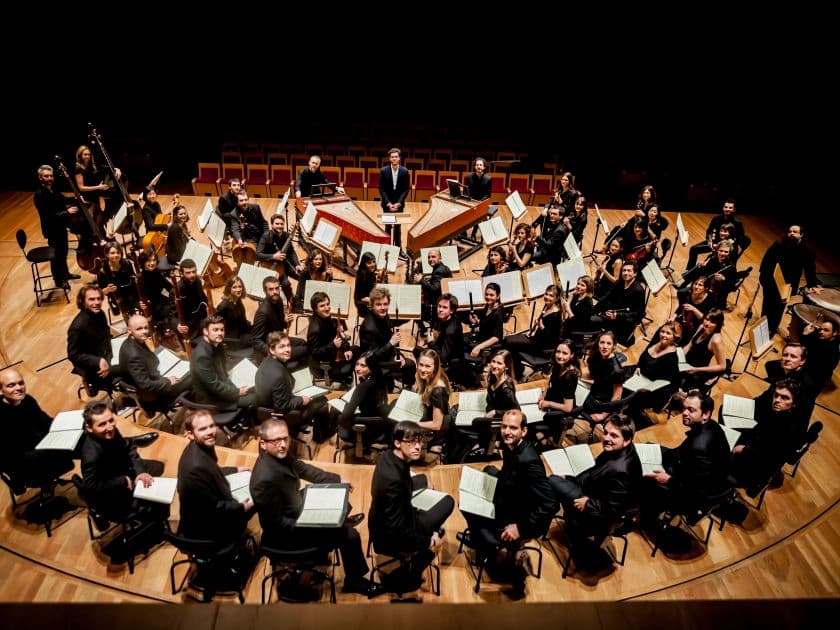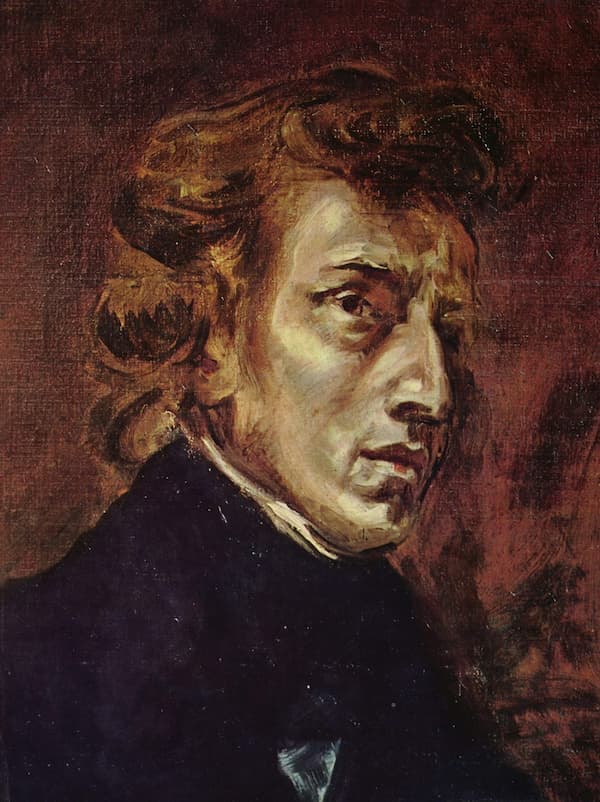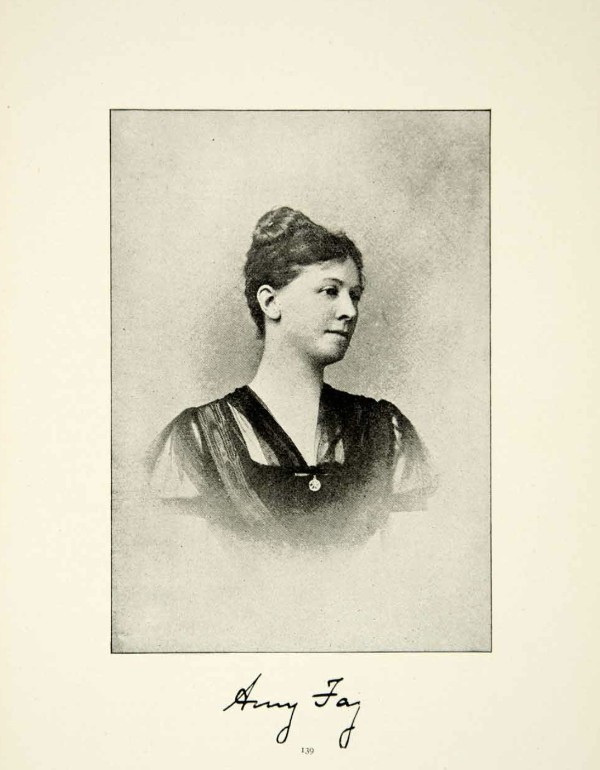Composers can spend months or years crafting the perfect ending to a symphony.
It’s easy to understand why the ending is so important. Those last few minutes of a piece are the ones that audiences will walk away thinking about. It’s also the place in the symphony where the work’s entire emotional journey culminates. A bad ending can spoil your enjoyment of an entire work of art (just ask Game of Thrones viewers).
Today we’re looking at times when composers got it right. Here are six of the most monumental endings in the history of symphonies.

Pygmalion Choir and Orchestra © Piergab
Beethoven: Symphony No. 5
Beethoven’s fifth symphony is one of the most famous pieces not only of classical music, but of music, period.
Although it’s most famous for the four-note fate motif that opens it (bum bum bum BUM), the finale is also a highlight.
It emerges without a break from a murky-sounding third movement. Out of the musical ooze comes a massive crescendo and a triumphant theme in the brass. (This symphony was among the first to employ trombones, creating a particularly striking brass texture.)
The final ninety seconds are a series of C-major chords. Every time you think the symphony is over, Beethoven just keeps going and going, with a piccolo peeping through the texture. The entire coda is one of the most relentlessly exuberant moments in classical music history.
Shostakovich: Symphony No. 5
Shostakovich lived and worked in the Soviet Union’s terrifying Stalinist regime, and it nearly killed him.
In 1936, he got on the dictator’s bad side after Stalin denounced one of his operas. Such a condemnation could spell the end of Shostakovich’s career – and life. He had to do something to prove his devotion, and fast.
What he came out with his fifth symphony, which can be read as a celebration of Soviet might…or a sarcastic response to political oppression.
Tempos to the symphony’s final few moments have changed drastically. An earlier generation of conductors tended to interpret the finale of the fifth as a full-throated celebration. Now they gravitate toward a more measured view and a slower, almost agonising tempo.
Shostakovich’s resilience in the face of a terrifying political environment, combined with the power of the music itself, should land this symphony in any “most epic endings” list.
Jean Sibelius: Symphony No. 2
Like Shostakovich 5, this symphony also explores extra-musical themes of national identity and rebellion.
When Sibelius wrote this symphony, the matter of Finnish independence was a hot topic. Although Russia controlled Finland, Finnish citizens were pushing back hard against ever-increasing Russian oppression.
When this symphony premiered in 1902, Finnish audiences interpreted its romantic, defiant atmosphere as a political statement. Indeed, it was nicknamed “the Symphony of Independence.”
The finale features huge brass fanfares and passionate fortissimo tremolo from the strings.
Conductor and composer Robert Kajanus wrote about this work: “[It] develops towards a triumphant conclusion intended to rouse in the listener a picture of lighter and confident prospects for the future.”
Tchaikovsky: Symphony No. 4
Pyotr Ilyich Tchaikovsky‘s Fourth Symphony was a work that was deeply important to him. He wrote it between 1877 and 1878 and dedicated it to his patroness, Nadezhda von Meck.
The finale, marked “Allegro con fuoco”, bursts forth with a frenetic energy that sweeps the listener away with skittering figures in the strings.
The finale features loud dynamics, piercing brass, and countless cymbal crashes, all pushing the movement further and further to the crazed ending.
The coda at the very end, featuring a hearty dose of piccolo and cymbals, is beyond rousing and makes for one of the most electrifying conclusions in the symphonic literature.
Berlioz: Symphonie Fantastique
The backstory behind Berlioz’s Symphonie Fantastique is more than a little disturbing.
As a young composer based in Paris, Berlioz became obsessed with Irish actress Harriet Smithson, who was touring Paris in 1827 and performing Shakespeare. She must have been an extraordinary actress, because even though Berlioz could not speak English, he was still mesmerised by her.
He tried to get a hold of her to let her know about her infatuation, but nothing came of his attempts at making contact. So he turned to music and drugs (as any self-respecting Romantic megalomaniac would).
In 1830, he wrote an entire symphony that was program music and a thinly veiled autobiography. A young musician falls in love with a woman. He tries to forget her but no matter where he goes, he can’t stop thinking about her. He goes out to the countryside and hears distant shepherds making pastoral music. Nothing helps, so he takes some opium and, in modern parlance, goes on a bad trip, dreaming that he is executed for murdering his lover.
This is all unhinged enough, but in the fifth and final movement, the young artist, in Berlioz’s words, finds himself “in the middle of a horrible troop of ghosts, sorcerers, and monsters of all kinds gathered together for his funeral.” The artist’s beloved also arrives to take part in the “diabolical orgy.”
The use of startlingly innovative orchestration, resulting in dramatic effects, signals an ending that is both thrilling and nightmarish.
Mahler: Symphony No. 2
Have we saved the best for last? You decide.
Over the course of ninety minutes, Mahler’s Symphony No. 2, often called the Resurrection Symphony, explores the titanic themes of life, death, and rebirth.
The work’s culmination occurs in the last six minutes or so, where orchestra, chorus, and vocal soloists all sing a powerful resurrection hymn.
This moment is so affecting that Bradley Cooper chose it as the emotional heart of his 2023 biopic of Leonard Bernstein, Maestro.
Bradley Cooper conducts Mahler’s Second in Maestro
These final moments, simultaneously earth-shattering and heavenly, suggest an inconceivably transcendent spiritual triumph.
Musicians may have other answers to the question “what is the most epic symphony ending of all time?”, but none of them will blame you for choosing the majesty of Mahler’s second!
For more of the best in classical music, sign up for our E-Newsletter



